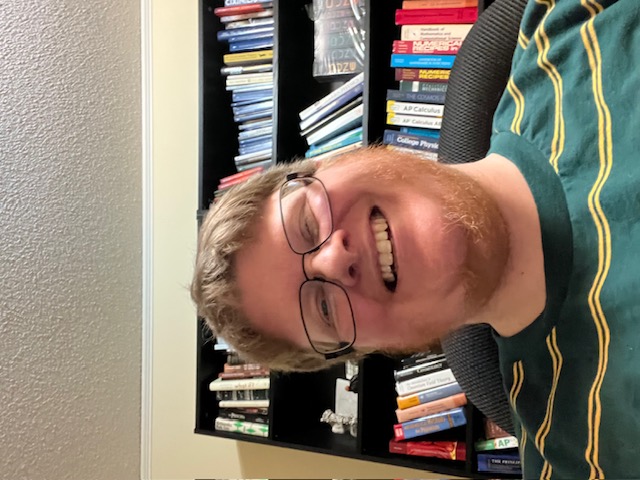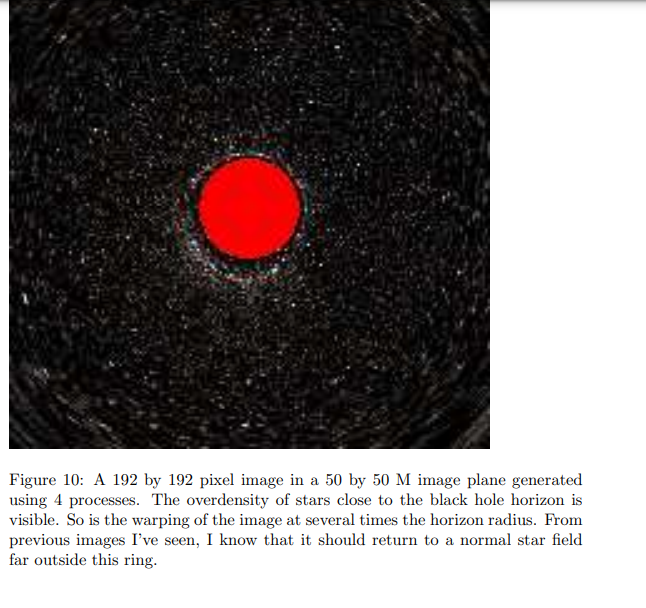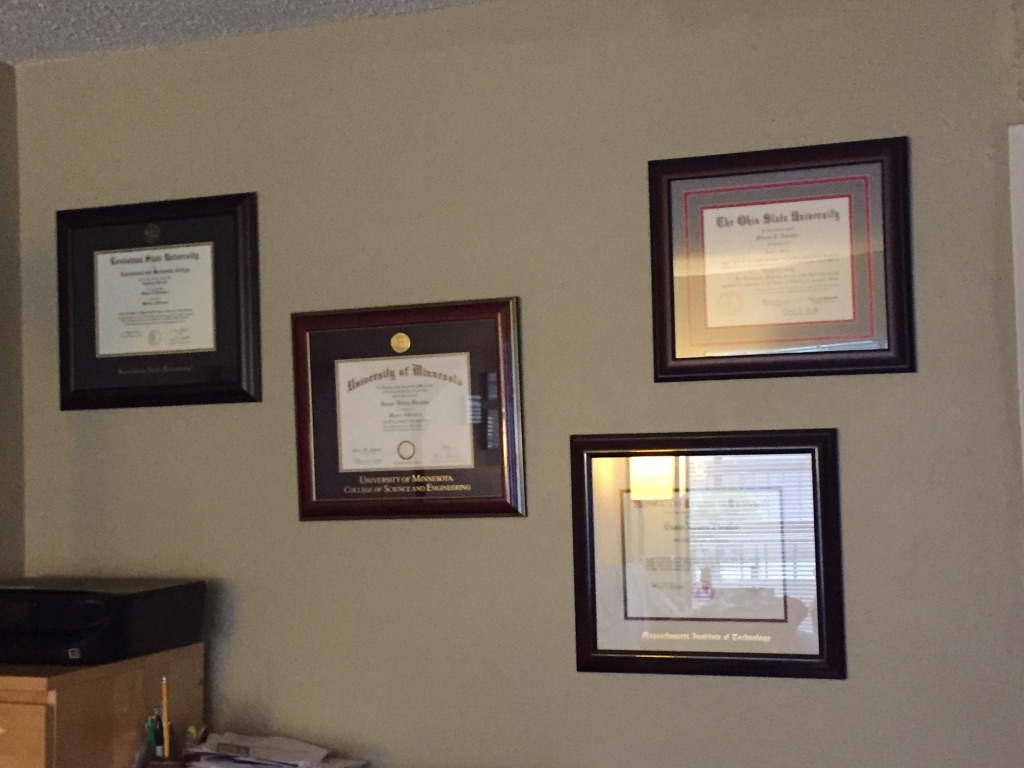Steven Dorsher
Former Computational Physicist

I have had a 15+ year research career in physics and astronomy over the course of my bachelors degree, three masters degrees, and since my final graduation. Most of this (10+ years) has been in computational physics. My primary focus is in general relativity, black holes, and gravitational waves. I have also done research in cosmology, particle physics, neutrinos, exoplanets, the three body Newtonian gravity problem, and fractional calculus.
I have 8 main publications/documents and about 35 total including membership in LIGO spanning the time of the first three detections.
My background is primarily in scientific programming, in the context of data analysis algorithms, experiment development and assessment, and numerical methods for theory.
Education
- MS Physics, LSU, December 2017. Multiple advisors and supervisors, at the time of graduation, Jorge Pullin
- MS Physics, U of MN, July 2013. Mulitple advisors and supervisors. For NOνA, Ronald Poling. At the time of graduation, Joseph Kapusta signed off as Department Chair.
- MS Astronomy, Ohio State, August 2006. Advisor: Andrew Gould
- BS Physics, MIT, June 2004. Advisor: Jacqueline Hewitt
Computational work
LSU Masters work in general relativity and gravitational waves
University of Minnesota and LSU LIGO gravitational wave detector masters work
Previous work at Ohio State (masters) and MIT (undergrad), as well as independent post-graduate work
- Exoplanets paper. I no longer have the code, written in FORTRAN at Ohio State for a masters in astronomy. Early exoplanet statistics analysis using Monte Carlo methods to simulate a line of sight in the galaxy to realistically determine the observable population of stars in the OGLE-III lensing survey, and hence the fraction of stars with planets.
- Undergrad ThesisWritten in C, I no longer have the code. This was a Monte Carlo simulation to assess the feasibility of using Einstein ring radii to measure the cosmological constant and matter density of the universe based on strong gravitational lens systems known at the time.
- Python Newtonian Gravity three body orbits codeThis numerically solves a differential equation to plot an orbit and compute the energy transfer between a planet and an inner binary star system. I have verified that it is not a numerical artifact of the simulation.
Student research at Saint Cloud State University on Fractional Calculus
Class projects
Tiny black hole image I made

Other Skills
Python (roughly 3 years equivalent over 5 years, not daily)
C++ (4.5 years) and C (1.5 years)
Fortran (5 years)
Other previous experience with:
- Matlab (2.5 years)
- Java (1 year)
Technically have used:
Databases
- Pandas
- A little SQL
- A little HBase
Very minimal parallel programming experience with
Machine Learning-- beginner level, certificates, need practical experience still, mostly guided projects so far
- Data Cleaning
- Visualization
- Regression-- linear, relu, logistic, tanh, softmax
- Classification
- Clustering
- Neural Networks
- Convolutional Filtering
- Adam optimizer
- Batch filter
- Recurrent Neural Networks
- Maybe: Transformers
- Maybe: GRUs, LTSMs
- Guided Projects in: phrase generation, image recognition and object detection and location, music generation, activation word detection (and overlay of beep), facial recognition and authorization, video game starship lander trajectory prediction, French to English translation (though that was very heavily guided and my French is very beginner)
- Mathematical calculation of more precise technique for cosine similarity (it is possible a reference was given but I computed it instead)
Neural Networks and Deep Learning
Improving Deep Neural Networks: Hyperparameter Tuning, Regularization, and Optimization
Structured Machine Learning Projects
Convolutional Neural Networks
Sequence Models, Specialization Certificate
Machine Learning Specialization; Coursera; DeepLearning.AI; Stanford
Coursera; Google; discontinued due to inability to finance BigQuery
DataQuest Data Science Certificates
DataQuest Data Science Certificates
Job status/teaching certificates
Links
Other professional portfolio websites, and about-me's
Personal links
Contact Information
You can reach me most easily by email:
dorsher@alum.mit.edu
On names and ID: My degrees were granted under the name of Susan Dorsher, which is my legal name (associated with the credit card on this account FYI and I have sent LinkedIn ID in the form of my passport card and MN state ID). The majority of my publications are under Steven Dorsher (please see ORCID or ResearchGate where both names are listed) to reflect the name I have used personally and professionally since 2009. I am a transman/nonbinary, permanently in the middle by both choice and medical necessity. Please, I go by Steven.
This is my real name and identity. I do not have alternate identities. My Guild Wars 2: WaveIn; SWTOR legacy: Dreamstar. FFXIV: will update when I remember. MIT & 90's: eirl; Legend's LARPing in 2000's: Aurbren
You know who you are: Shut the fuck up and go away
In a world obsessed with sexual harassment this should not need to be said, but I am in a ten year long term relationship with a cis man and prior to that was married for ten years, also to a cis man. I have not had other partners in the last twenty years. I am not even remotely interested in being involved with someone else and it is incredibly offensive to confuse LGBTQIA people with prostitutes or pedophiles. That is not what the words transgender, nonbinary, gay, or queer mean. At this time my partner and I are long distance and I have not seen him since 2017 in person. I have been completely true to him. It is also extremely offensive to assume that I am promiscuous, or, even, sexually active, under the circumstances. While I would like a career, you can be certain, I am looking for a job based on my credentials. I would be just as horrified as the average person capable of becoming pregnant to be touched by a coworker non-consensually.
Yes I'm Steven he/him by preference.
Yes I love my partner forever.
Yes my ID is still all female and in my female birth name. No I have not had surgery and have not been on hormones since 2011. Yes I still have a beard. Yes I like my beard.
Why is this confusing?


